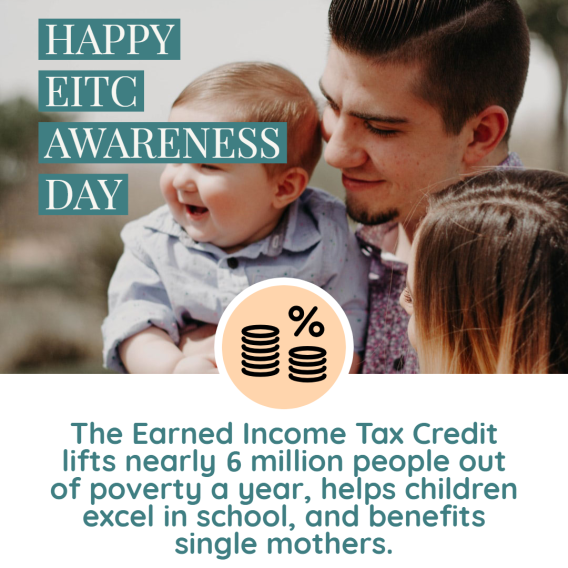By Christine Tran, 2020 Get It Back Campaign Intern
We have 30 days to help ensure that 12 million Americans who have been hit hardest by the pandemic receive their stimulus payments ($1,200 per adult, $2,4000 per married couple, and $500 per dependent child). November 21, 2020 is the deadline to complete the Non-filer form to get the payment this year.
This non-filer population includes very low-income families with children, people who have been disconnected from work opportunities for a long period, and low-income adults without children. Stimulus payments can help people put food on the table, make rent, pay bills, and buy school supplies for children. Organizations can assist non-filers to access these vital payments.
Help connect non-filers to payments by conducting virtual and in-person outreach efforts for the next 30 days. Given the safety concerns of the COVID-19 pandemic, prepare to adapt the campaign plan based on the situation in your area.
Pre-Launch:
Decide your role
Assess the role your organization can play in helping people receive their stimulus payments.
Assisters: Help people assess their eligibility and assist them with submitting the IRS non-filer form. Volunteers for Angel Resource Connection, a non-profit in Seattle, set up tables and laptops on the street to help those experiencing homelessness sign up for their stimulus payments.
Referrers: Connect people to local support to complete the online form and help them set up an appointment, if needed. Local Volunteer Income Tax Assistance (VITA) sites offer free, high quality tax preparation from IRS-certified volunteers. If VITA sites in your area are closed, contact your local Low Income Taxpayer Clinic, United Way, Community Action Agency, or Catholic Charities agency.
Notifiers: Share information about the payments, how to get them, and any places offering support. Publicize resources like United Way’s 211 EIP Helpline: 1-844-322-3639, which provides live assistance to help people complete the IRS non-filer form and answer questions about eligibility.
Also, determine whether your organization will conduct in-person or remote outreach efforts. This decision will help guide your outreach plan.
Connect with local organizations
Learn about current efforts in your community around the stimulus payments that your organization can join. Build partnerships with other organizations to launch community efforts around the stimulus payments if no current efforts exist in your area.
Reach out to organizations such as VITA sites, faith-based organizations, community centers, adult education centers, DMVs, food banks, schools, public libraries, local businesses, legal clinics, homeless and domestic violence shelters, and other organizations that serve harder-to-reach, high-poverty, vulnerable communities.
Identify your outreach materials
These are some available outreach materials that you can use. Choose which materials to use based on the goals of your campaign and whether your campaign is in-person or remote.
- Digital campaign materials: state-specific data, local organizations’ logos, customizable social media graphics and posts, an email template, a blog template, a press release template, and an information flyer.
- Physical campaign materials: flyers, mailers, phone banking scripts, and SMS scripts.
Campaign Plan:
This suggested campaign plan is a guide for you to form your organization’s own campaign plan. Depending on your timeline, you can lengthen or shorten your outreach timeline. Adapt the campaign to your organization’s capabilities to create a plan that your organization can realistically achieve in the upcoming weeks.
Week 1:
In-Person Options:
Distribute flyers through your organization and partner groups to reach people you serve throughout the week. Be ready to talk about the stimulus payments and inform people of resources they can use to sign up for their payment.
- Give a flyer to everyone that visits your organization. Homeless shelters can pass out flyers to community members that use their services.
- Include a flyer in materials you give to your clients. Food banks can attach flyers to food pantry boxes.
- Prioritize low-income communities or residential areas with public housing units to place flyers on community members’ doors.
Work with organizations to provide in-person support throughout the next four weeks. To support people experiencing homelessness, bring laptops to outdoor places where people will be. Recruit volunteers to help fill out the Non-filer form. Since this option is more involved, read about how you can connect people experiencing homelessness to their stimulus checks first.
Assisters, referrers, and notifiers will include different information in flyers, mailers, and other resources. Assisters can include their organization’s contact information, referrers can connect people to local services, and notifiers can inform people of national resources to file, including United Way’s 211 EIP Helpline.
Remote Options:
Coordinate a specific date and time for a social media launch to kick-off the campaign. Your organization and your partners can post informational flyers and social media graphics on Facebook, Instagram, and Twitter.
- Decide if you will all post at the same time or stagger social media posts throughout the day.
- Make sure to tag each other in your social media posts to highlight all the organizations that people can turn to!
- Spread the word that people who are incarcerated are now eligible to receive stimulus payments.
Assisters can publicize their own services, referrers can publicize other services, and notifiers can publicize general resources.
Phone bank people on your organization’s contact list to remind them to file for the stimulus payments. Inform them about any future virtual events your organization will host.
- Ask people to identify three people with whom they can share the information about stimulus payments – they can write this information down. This strategy is called relational organizing, and will help spread awareness of the stimulus payments through the individual’s personal networks.
Send informational mailers to people on your organization’s contact list.
Assisters can publicize their own services, referrers can publicize other services, and notifiers can publicize general resources.
Week 2:
In-Person Options:
Encourage volunteers and staff members within your organization to volunteer with partner organizations who are directly assisting people to get the payments.
Connect with local businesses, public libraries, legal clinics, adult education centers, DMVs, and community centers to request to place flyers in their establishments.
Remote Options:
Launch virtual event with partner organizations that explain what stimulus payments are and resources to file.
- This event can be held on platforms such as Zoom or Facebook Live.
- Consider featuring different partner organizations that provide a variety of resources, such as in-person assistance, phone assistance, or virtual assistance.
- Choose an exciting keynote speaker to create buzz around the event.
- Promote the event in your phone banking conversations and email blasts about the stimulus payments.
- Reach out to state and local agencies or community organizations that work with your targeted population and request that they help publicize your event.
- Post consistently about the event on your partners’ and your social media platforms.
Email people on your organization’s contact list to remind them to file for their stimulus payments if they have not already done so.
Text people on your organization’s contact list to remind them to file for their stimulus payments if they have not already done so.
Post informational flyers and social media graphics on Facebook, Instagram, and Twitter.
- Publish a countdown post. Example: “2 Weeks Left to Claim Your $1,200 Stimulus Payment!”
- Publish a post highlighting the number of adults and children who are missing payments in your state.
- Publish a post featuring resources to help file.
Week 3:
In-Person Options:
Distribute flyers to mailboxes of residential homes and in public areas, such as parks, grocery stores, community centers, DMVs, and public libraries.
Focus on residential areas that are underserved, where hard-to-reach non-filers may live.
Remote Options:
Email people on your organization’s contact list to remind them to file for their stimulus payments if they have not already done so.
Text people on your organization’s contact list to remind them to file for their stimulus payments if they have not already done so.
Post informational flyers and social media graphics on Facebook, Instagram, and Twitter.
- Publish a countdown post. Example: “1 Week Left to Claim Your $1,200 Stimulus Payment!”
- Publish a post highlighting the unemployment rate in your state and reminder that people who don’t work can get stimulus payments.
- Publish a post about back-to-school and how stimulus payments can support children to get the school supplies they need.
- Publish a post featuring specific resources to help people get their payments.
Week 4: The Final Push!
In-Person Options:
Distribute flyers through your organization and partner groups to reach people you serve throughout the week. Be ready to talk about the stimulus payments and inform individuals of resources they can use to sign up for the payment.
Remote Options:
Phone bank, email, and text people on your organization’s contact list to remind them to file for their stimulus payments if they have not already done so.
- Drive the sense of urgency to get stimulus payments. This is the last week for this year!
Post informational flyers and social media graphics on Facebook, Instagram, and Twitter.
- Publish a countdown post every day for this final week. Example: “10 Days Left to Claim Your $1,200 Stimulus Payment!”
- Publish a post highlighting COVID-19’s impact on your state’s economy and how getting stimulus checks to non-filers will put money into the economy.
- Publish a post featuring resources to help file.
Stimulus payments are a critical financial resource for those most impacted by the pandemic, the majority of whom are low-income people of color. We have 30 days (until November 21) to help ensure that as many eligible people as possible get their money. Let’s get to work!





